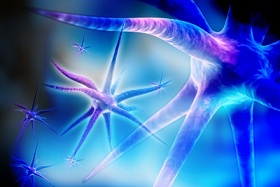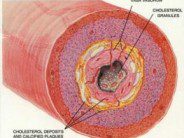 Parkinson’s disease a neurological degenerative disorder that results from the death of dopamine producing nerve cells located in the substantia nigra. Symptoms of the disorder include involuntary shaking, rigidity, slowing of movement, and shuffling gait. In later stages, behavioral problems occur with decline in cognition that can lead to dementia. These symptoms are believed to occur due to reduced activity and levels of dopamine, which is produced by the neurons of the pars compacta region of the substantia nigra. In addition, neurons throughout the brain also go through a process of cell death. One mechanism of neuron cell death is the accumulation of a protein termed alpha-synuclein, which forms inclusions called Lewy bodies. Since the first description of the disorder by Dr. James Parkinson in 1817, there have been many advances made in the treatment of the neurological disorder. One barrier to further research into the disease has been the lack of adequate disease tissue for study. Researchers, lead by Dr. Tilo Kunath, have successfully produced Parkinson’s disease neurons from the skin fibroblasts of a patient via induced pluripotent stem cells. The results of the research were published online in the journal Nature Communications. We have previously discussed the conversion of human skin fibroblasts into neurons that exhibit characteristics of Alzheimer’s disease. For this study, the researchers took skin fibroblasts from an SNCA triplication patient and an unaffected first degree family member and converted these cells into induced pluripotent stem cell lines. Triplication of SNCA, encoding alpha synuclein, results in an advanced form of Parkinson’s disease. The induced pluripotent stem cell lines were then converted into dopaminergic neurons. The researchers found that the neurons from the patient produced double the amount of alpha synuclein protein when compared to the neurons produced from the unaffected family member. This finding reproduces and reconfirms the exact cause of Parkinson’s disease in this patient and in other forms of the disease. The authors wrote, “we have derived a collection of [induced pluripotent stem cell] lines from a [Parkinson’s disease] patient with triplication of the alpha-synuclein locus, and an unaffected first-degree relative. This study demonstrates the potential of human dopaminergic neurons in vitro as a model for studying Parkinson’s disease… This model represents a new experimental system to identify compounds that reduce levels of alpha-synuclein, and to investigate the mechanistic basis of neurodegeneration caused by alpha-synuclein dysfunction”. Researchers will now have a good in vitro model system of Parkinson’s disease to further study the disorder and perform trials with potentially therapeutic medications.
Parkinson’s disease a neurological degenerative disorder that results from the death of dopamine producing nerve cells located in the substantia nigra. Symptoms of the disorder include involuntary shaking, rigidity, slowing of movement, and shuffling gait. In later stages, behavioral problems occur with decline in cognition that can lead to dementia. These symptoms are believed to occur due to reduced activity and levels of dopamine, which is produced by the neurons of the pars compacta region of the substantia nigra. In addition, neurons throughout the brain also go through a process of cell death. One mechanism of neuron cell death is the accumulation of a protein termed alpha-synuclein, which forms inclusions called Lewy bodies. Since the first description of the disorder by Dr. James Parkinson in 1817, there have been many advances made in the treatment of the neurological disorder. One barrier to further research into the disease has been the lack of adequate disease tissue for study. Researchers, lead by Dr. Tilo Kunath, have successfully produced Parkinson’s disease neurons from the skin fibroblasts of a patient via induced pluripotent stem cells. The results of the research were published online in the journal Nature Communications. We have previously discussed the conversion of human skin fibroblasts into neurons that exhibit characteristics of Alzheimer’s disease. For this study, the researchers took skin fibroblasts from an SNCA triplication patient and an unaffected first degree family member and converted these cells into induced pluripotent stem cell lines. Triplication of SNCA, encoding alpha synuclein, results in an advanced form of Parkinson’s disease. The induced pluripotent stem cell lines were then converted into dopaminergic neurons. The researchers found that the neurons from the patient produced double the amount of alpha synuclein protein when compared to the neurons produced from the unaffected family member. This finding reproduces and reconfirms the exact cause of Parkinson’s disease in this patient and in other forms of the disease. The authors wrote, “we have derived a collection of [induced pluripotent stem cell] lines from a [Parkinson’s disease] patient with triplication of the alpha-synuclein locus, and an unaffected first-degree relative. This study demonstrates the potential of human dopaminergic neurons in vitro as a model for studying Parkinson’s disease… This model represents a new experimental system to identify compounds that reduce levels of alpha-synuclein, and to investigate the mechanistic basis of neurodegeneration caused by alpha-synuclein dysfunction”. Researchers will now have a good in vitro model system of Parkinson’s disease to further study the disorder and perform trials with potentially therapeutic medications.
Reference:
Michael J. Devine et al. “Parkinson’s disease induced pluripotent stem cells with triplication of the alpha-synuclein locus” Nature Communications published online August 23, 2011 doi 10.1038/ncomms1453










 DrSamGirgis.com is a blog about medicine, nutrition, health, wellness, and breaking medical news. At DrSamGirgis.com, the goal is to provide a forum for discussion on health and wellness topics and to provide the latest medical research findings and breaking medical news commentary.
DrSamGirgis.com is a blog about medicine, nutrition, health, wellness, and breaking medical news. At DrSamGirgis.com, the goal is to provide a forum for discussion on health and wellness topics and to provide the latest medical research findings and breaking medical news commentary.
{ 0 comments… add one now }